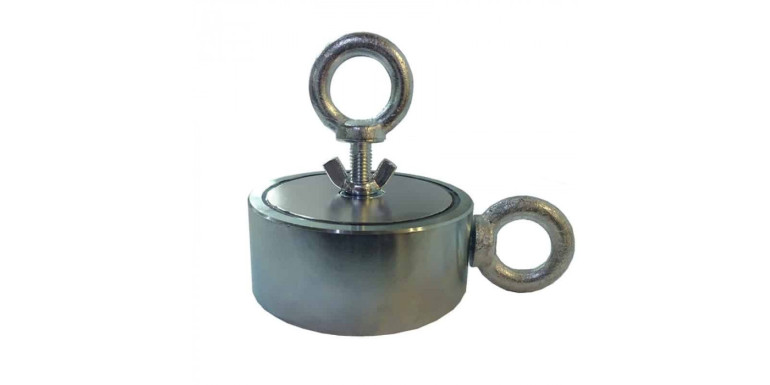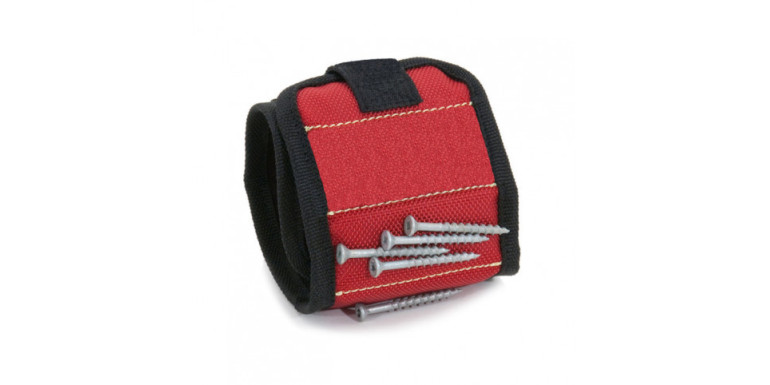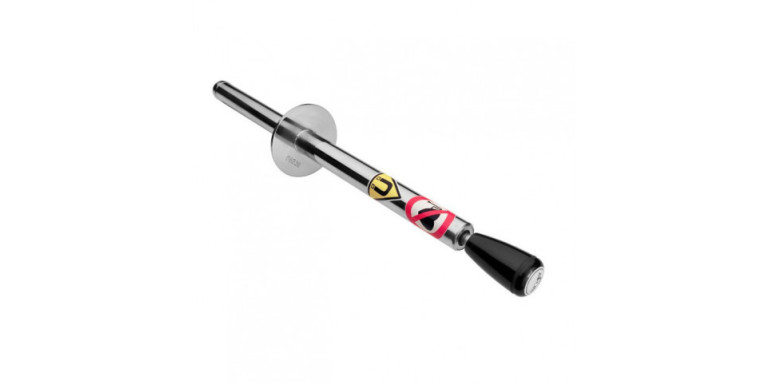
What is magnet fishing?
Magnet fishing is an activity that involves using a strong magnet on a fishing rod or line to catch metal objects from streams, lakes, canals or harbors. The principle of magnet fishing is simple. Usually a strong neodymium magnet, is tied to the end of a rope, and then lowered into the water. When the magnet adheres to a metal object, you can slowly pull it out. The most commonly found items include old coins, keys, tools, guns, old metal objects and other lost items.
What equipment do I need?
The key piece of equipment is a powerful magnet that is capable of pulling metal objects out of the water. The most common magnets used for magnet fishing are neodymium magnets, which have high magnetic strength. Keep in mind that strong magnets can be dangerous, so handle them with care and take safety precautions.
Fishing rod or rope that you tie to the magnet. Together with it, you will be able to lower the magnet into the water and retrieve the found objects. Choose a quality and strong rod or rope that can withstand the load and won't break when pulling heavier items.
Another possible equipment is protective gloves. This protective item will provide protection from potential hazards such as sharp edges of found metal objects.
A container or bucket for found objects and appropriate clothing and footwear.
What does the number of kilograms on a magnet mean?
The number of kilograms in a magnet usually refers to its repulsive force, which indicates the magnet's ability to attract metal objects. In the context of magnet fishing, where the magnet is used to catch metal objects from the water, the breaking force is an important factor that affects the success and effectiveness of this activity.
This force is usually given in kilograms (kg) or Newtons (N). A higher number of kilograms or Newtons means a stronger magnet with a greater breakaway force.
When choosing a magnet for magnet fishing, it is therefore advisable to consider not only its strength, but also other factors such as the magnet's size and shape and its resistance to corrosion.
Which magnet to choose?
One of the most important factors is the aforementioned breakaway force. The higher the value, the more the magnet will be able to attract heavier metal objects. It is recommended to choose a magnet with a pulling force of at least 100 kg, which should be strong enough for common magnet fishing needs.
Most commonly used magnets for magnet fishing are neodymium magnets, which have high magnetic strength. When choosing a neodymium magnet, make sure it is corrosion resistant and has sufficient protection against damage.
The size and shape of the magnet can also affect its usability. Larger magnets usually offer higher breakaway force, but can be heavier and harder to handle. For example, if you plan to fish in waters where there might be more obstructions, you may be better off with a smaller magnet that can get into tight spaces more easily.
What's the difference between a traditional magnet and a double-sided magnet?
The difference between a classical and a double-sided magnet lies in their magnetic polarity and magnetic field orientation.
A classical magnet is most commonly known as a unipolar magnet, meaning that it has two ends, which are designated as the north pole and the south pole. The north pole attracts the south pole and vice versa.
A bipolar magnet, also known as a bipolar magnet, has magnetic polarity on both sides. That is, the magnet has a north pole on one side and a south pole on the other. This creates an attractive force on both sides of the magnet.
For magnet fishing, conventional magnets with one magnetic polarity are usually used.
Which rope to choose?
Magnet fishing requires a strong and durable rope that can handle the strain of hauling heavy metal objects. Select a rope with sufficient tensile strength and load capacity that will be able to bear the estimated weight of the objects. It is recommended to select a rope with a pulling force of at least 250 kg.
You can choose from three different materials. Nylon ropes are resistant to wear and have a good load capacity. Polypropylene ropes are lightweight and moisture resistant, but have lower tensile strength. Kevlar ropes are extremely durable and have a high load capacity, but are more expensive.
How to tie a knot?
One of the most widely used knots is the so-called figure-of-eight knot. The figure of eight knot is easy to tie and loosens quickly when the object is pulled out. However, it is important to check the condition of the knot and rope regularly during magnet fishing, especially if you come into contact with heavier objects.
How do I increase the chances of finding an interesting find?
For example, focus on historic sites such as old bridges, harbors, lakeshores, lakes with public access, old landfills, or areas where people are frequent and abundant. If possible, try to look for places that have not been explored very often by other magnet fishermen.
A strong neodymium magnet with high pulling power will allow you to attract heavier and larger metal objects. When throwing the magnet into the water, try to cover as much bottom area as possible. Then, slowly and carefully pull the magnet out and check for any objects caught on it.
After each time you pull the magnet out of the water, it is a good idea to remove any stuck metal objects. This will ensure that the magnet is ready for the next use and will not unnecessarily lose pulling power.
Isn't it dangerous?
Generally speaking magnet fishing is not dangerous, you just need to follow the basic rules to help you stay safe. Be cautious when walking on slippery banks and avoid overly deep or dangerous areas and strong current.
If you find metal objects, be aware that they may be sharp, rusty or dangerous. Be careful when handling them and wear protective gloves. Some items found may also be dangerous, such as ammunition or chemical containers. In such cases, you should immediately contact the local authorities responsible for removing hazardous materials.
Isn't it forbidden?
Magnet fishing may be regulated or prohibited in certain locations, especially if they are cultural or ecologically protected sites. Before you start magnet fishing, find out about local laws, rules and regulations regarding this activity. Follow these rules and respect private property and the environment.
What to do if the magnet gets stuck?
If the magnet is stuck, try moving it gently up and down while slowly pulling it out. This movement could cause it to loosen and separate from the object.
If the magnet won't release, try pulling it out at a different angle.
Try using a long rod or other crowbar.
What finds can I find?
When magnet fishing, you can find a variety of items, such as: old nails, screws, nuts, steel pipes, keys, metal tools, jewelry such as bracelets, chains or rings, weapons such as guns, knives or rifles, as well as old coins, military equipment or pottery. In some cases, you may find old bicycles, vehicle parts or vehicle wrecks.
Will a magnet lose its magnetic power?
The magnet usually does not lose its magnetic force when magnet fishing itself.
However, a magnet may gradually lose a small amount of its magnetic force over time. This can be due to various factors such as heat, vibration, mechanical stress, or exposure to an external magnetic field.
Can I find gold?
It is theoretically possible if the magnetic metal is part of the gold object. However, it is important to realize that pure gold is not magnetic in itself. Gold is a metal with low magnetic permeability, which means it is not very sensitive to magnetic fields and does not tend to attract magnets.


